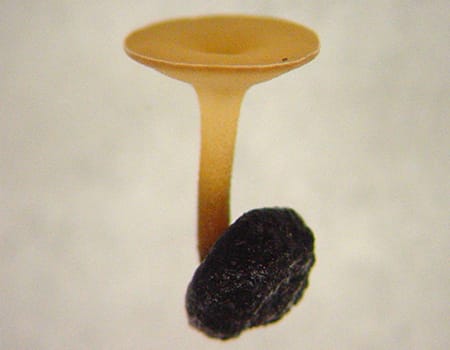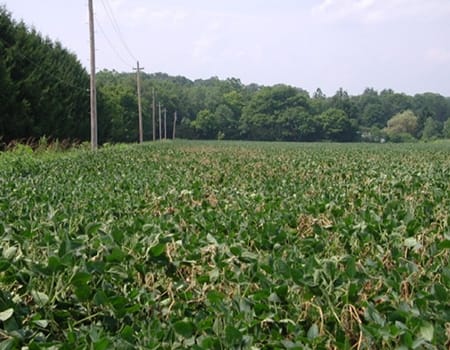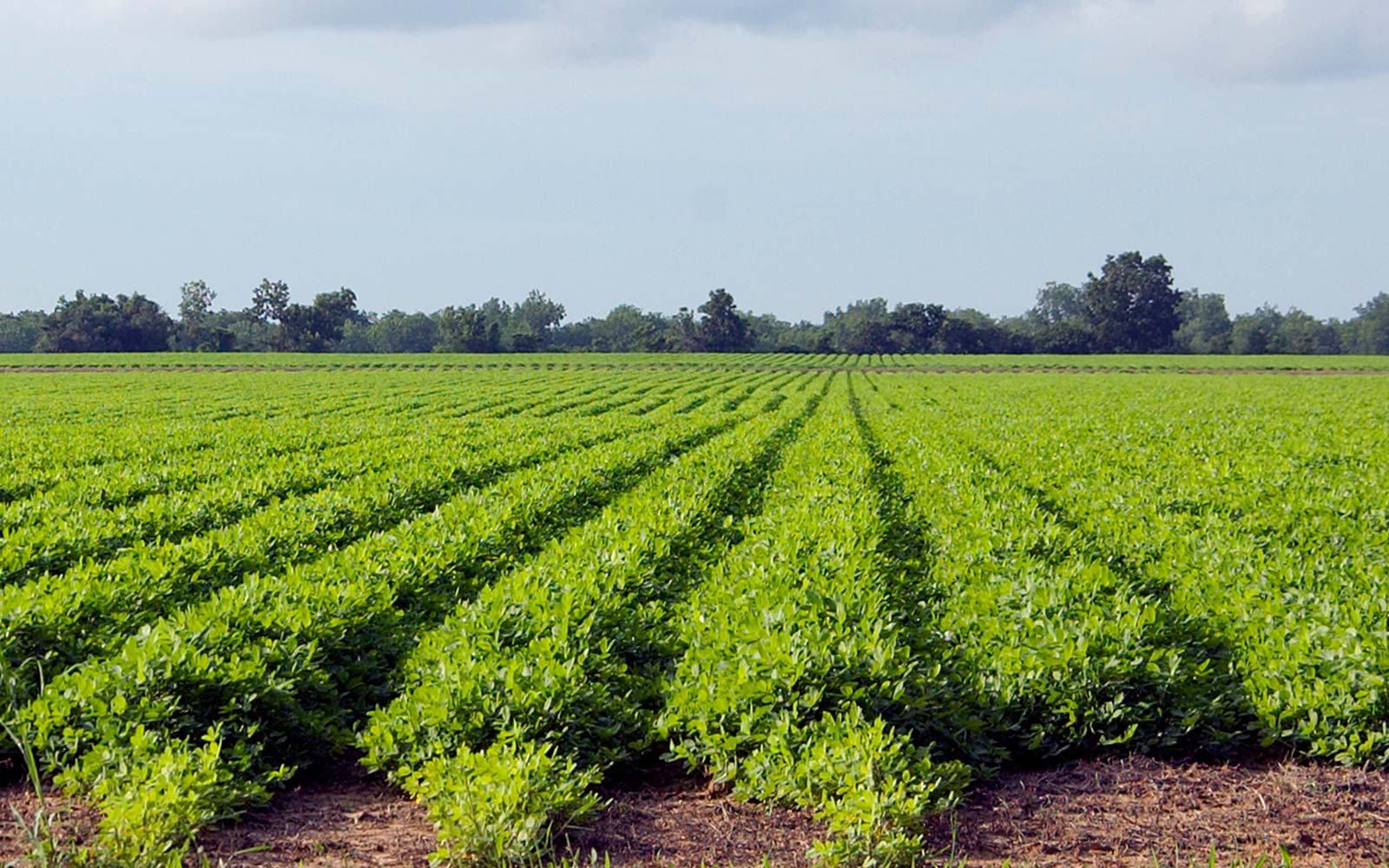If you grow soybeans, you’re likely familiar with Sclerotinia stem rot, also called white mold. But what exactly is it, and more importantly, how do you get rid of it or prevent it all together?
WHAT IS IT?
White mold is caused by Sclerotinia sclerotiorum, a fungal pathogen which favors wet conditions and cool temperatures. This pathogen can survive harsh conditions by forming hard, black and irregular masses called sclerotia. These survival structures will stay dormant over the winter months. Once humidity rises due to plant canopy closure, the emergence of mushroom-like bodies called apothecia can be seen.

Photo courtesy of Dr. Jeffery Rollins, Plant Pathology Professor at the University of Florida
According to the University of Nebraska-Lincoln’s (UNL) Cropwatch, apothecia can produce millions of spores over a week-long period that are released during favorable weather conditions. Because these spores are airborne, they can also travel to other fields, infecting nearby crops and contaminating soil.
Although the fungus can enter plants through damaged tissues, it most often infects by entering through flowers. For this reason, crops like soybeans are most susceptible when the plants are wet and flowering.
HOW TO IDENTIFY IT
According to Iowa State University, some symptoms of white mold resemble other diseases like brown stem rot, sudden death syndrome or stem canker, so it is important to identify the correct disease. Here are several signs of white mold to watch for:
- Wilting leaves that eventually turn brown and die but remain on the plant.
- Bleached, pithy-textured plant stems that shred easily.
- Gray or white lesions at plant nodes that rapidly progress.
- White, fluffy mycelial growth that covers infected areas, especially during humid conditions.
- Black sclerotia that are visible and embedded within mycelium on stem lesions and inside stems.

Photo courtesy of Ohio State University Extension
HOW TO PREVENT IT
In soybeans, white mold develops and spreads during flowering until pod formation. However, UNL says the disease needs high humidity and cool temperatures (below 85°F) to develop. If you grow soybeans in these conditions, here are actions you can take to lessen the chance of white mold developing:
- Select a soybean variety that is less susceptible to white mold.
- Avoid excessive irrigation during flowering.
- Plant in wider row widths to reduce crop canopy density.
- Control weeds that are also prone to white mold infection.
- Use ACROPOLIS® Fungicide at early bloom when conditions are favorable for white mold development.
HOW TO MANAGE IT
If you find your field is already infected with white mold, you can still limit the spread of the disease. Here’s how:
- Practice long crop rotations with plants that are not susceptible to white mold such as corn and wheat to minimize pathogen buildup. For reference, Iowa State says that sclerotia often die over a three- to four-year period between soybean crops.
- Practice no-till farming. This will keep sclerotia on the surface, where they will degrade more quickly than if they are buried.
- Use good quality seed from reputable dealers.
- When harvesting soybeans, harvest infected soybeans last to prevent spreading the white mold to uncontaminated fields. If you are unable to harvest them last, thoroughly clean equipment before harvesting fields without white mold.
For more tips and product information, visit www.AMVAC.com.
Additional Resources:
https://cropwatch.unl.edu/2016/sclerotinia-stem-rot-white-mold-soybean-what-look
https://crops.extension.iastate.edu/white-mold
©2019 AMVAC Chemical Corporation is a wholly owned subsidiary of American Vanguard Corporation. All rights reserved. AMVAC and respective logos are trademarks owned by AMVAC Chemical Corporation. Acropolis is a trademark of Sipcam Agro USA.
Important: Always read and follow label instructions. Some products may not be registered for sale or use in all states or counties. Please check with your state agency responsible for pesticide registration to ensure registration status. All products are EPA registered.
